
Isostatic Press
Manual Cold Isostatic Pressing Machine CIP Pellet Press
Item Number : PCIM
Price varies based on specs and customizations
- Working pressure
- 0-60 T
- Piston diameter
- φ95-φ150 mm
- Isostatic pressure
- 0-300 MPa
Shipping:
Contact us to get shipping details Enjoy On-time Dispatch Guarantee.
Why Choose Us
Reliable PartnerEasy ordering process, quality products, and dedicated support for your business success.
Applications
Lab Manual Isostatic Press is widely used in material researching labs,pharmacy,catalytic reaction,ceramics, electronic industries, it is one high efficient equipment for the sample preparing, due to its small footprint, it easy to carry and move, can work inside the vacuum glove box for processing under vacuum environment.
Isostatic pressing is a method for forming and densifying powders into a desired shape using a liquid medium to apply uniform pressure in all directions. The resulting products are known for their high homogeneity and are widely used in the production of advanced materials such as ceramics, hard alloys, and rare earth permanent magnets.
Lab manual isostatic pressing machines allow for precision control and manipulation of the pressing process, making them suitable for users with strict requirements.
Feature
- Small footprint, light weight, easy to carry and move, nice fitting vacuum glove box
- The use of isostatic pressing compacts has high density and uniformity, small firing shrinkage, and is not easily deformed.
- Manual isostatic presses are typically less expensive than electric isostatic presses, making them a cost-effective option for small-scale production or prototyping.
- Manual isostatic presses are typically easier to operate and require less training compared to electric isostatic presses.
- The pressure applied by manual isostatic presses can be adjusted manually, which allows for greater control over the pressing process and enables the production of parts with different densities.
- It can form slender rod or tubular compacts that are difficult to prepare in the normal pressure process.
- Isostatic press creates a higher and even pressure around the samples,increase sample density
- High precision digital pressure gauge
Detail & Parts




Mold operation


Advantages
- The upper plate adopts electroplated countersunk head hexagonal screws, beautiful and space-saving
- Chrome-plated cylinder, smooth surface, no rust, good sealing rubber ring, no oil leakage
- One-piece main board structure, oil pool, main board, oil cylinder in a body, no seal connection
- Extended pulling spring, good rebound effect, not easy to deformation, can achieve the cylinder 30mm return without deformation
- All aluminum alloy hand wheel, beautiful, practical, not easy to break
- Small size, light weight, no oil leakage, can be used in the glove box
- Mold using Japanese high-speed steel, good material, high hardness, no deformation, long service life
- Digital display pressure gauge, more accurate pressure control, pressure display accuracy of 0.01MPa
- Oil pool outside the host, easy to replace the oil, and the oil circuit increased the hydraulic oil filtration device
- Special plunger, using special custom sealing structure, excellent sealing effect
- Pressurizing device, placed in the lowermost corner of the mainframe, the angle is reasonable, pressurizing force does not tilt back
Technical specifications
| Instrument model | PCIM-12T | PCIM-20T | PCIM-40T | PCIM-60T |
|---|---|---|---|---|
| Pressure Range | 0-12T(0-17MPa) | 0-20T(0-21MPa) | 0-40T(0-30MPa) | 0-60T(0-34MPa) |
| Piston diameter | 95mm (d) in chrome plated oil cylinder | 110mm (d) in chrome plated oil cylinder | 130mm (d) in chrome plated oil cylinder | 150mm (d) in chrome plated oil cylinder |
| Pressure gage | Pressure and pressure dual scale display | Pressure and pressure dual scale display | Pressure and pressure dual scale display | Pressure and pressure dual scale display |
| Maximum piston stroke (T) | 40mm | 40mm | 50mm | 50mm |
| Guard | Organic glass | Organic glass | Organic glass | Organic glass |
| Ambienttemperature | 10℃-40℃ | 10℃-40℃ | 10℃-40℃ | 10℃-40℃ |
| lsostatic pressure | 0-300MPa | 0-300MPa | 0-300MPa | 0-300MPa |
| lsostatic pressure chamber | Φ22×70mm(M×N) | Φ30×120mm(M×N) | Φ40×150mm(M×N) | Φ50×150mm(M×N) |
| External dimensions | 305×195×530mm(L×W×H) | 305×195×600mm(L×W×H) | 355×215×710mm(L×W×H) | 405×240×720mm(L×W×H) |
| Equipment weight | 90Kg | 100Kg | 130Kg | 180Kg |

| Pressure conversion | ||
|---|---|---|
| Actual pressure | Chamber pressure | System pressure |
| 1.7 [Tons] | 1.86 [MPa] | 25 [MPa] |
| 3.5 [Tons] | 3.72 [MPa] | 50 [MPa] |
| 5 [Tons] | 5.57 [MPa] | 75 [MPa] |
| 7 [Tons] | 7.43 [MPa] | 100 [MPa] |
| 8.7 [Tons] | 9.29 [MPa] | 125 [MPa] |
| 10.5 [Tons] | 11.2 [MPa] | 150 [MPa] |
| 14 [Tons] | 14.8 [MPa] | 200 [MPa] |
| 17.5 [Tons] | 18.6 [MPa] | 250 [MPa] |
| 21 [Tons] | 22.3 [MPa] | 300 [MPa] |
| Reminder: Generally, the system pressure should not exceed 35MPa, otherwise it will affect the service life of the equipment. | ||
Operating steps
How to replace accessories and precautions
The operation of Lab Manual Isostatic Press is as follows:

Step 1: Place the sample in the cavity.

Step 2: Assemble the pressure rod and install the pressure rod.

Step 3: Place the cavity in the tablet press and tighten the oil drain valve.

Step 4: Pressurize the chamber to the required pressure.

Step 5: Loosen the oil drain valve and remove the isostatic chamber.

Step 6: Loosen the bleed screw of the chamber.

Step 7: Use the top screw to push out the isostatic pressure rod.

Step 8:Take out the pressed sample.
Full range of lab press types
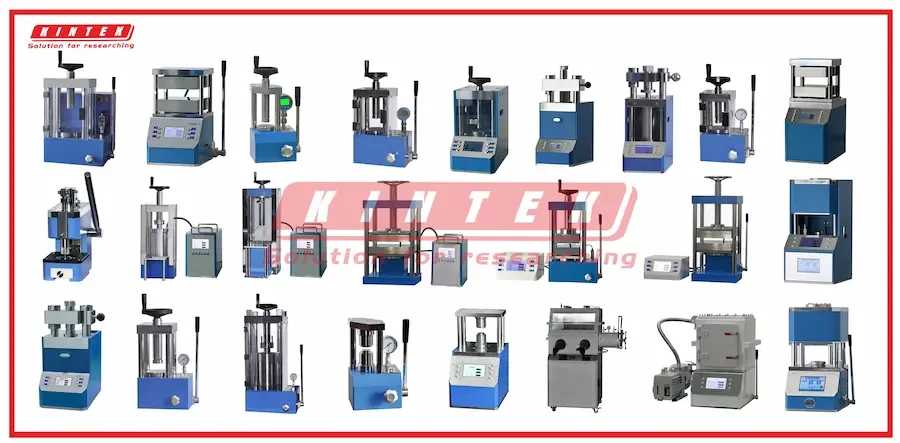
Click to view our full range of lab press products.
Any question? Our experts have helped many laboratories choose their lab press, contact us now!
Full range of types of laboratory press molds
We have a full range of molds for you to choose from, and the molds fit the body perfectly.
If you need molds with special shapes, we can also customize them for you.
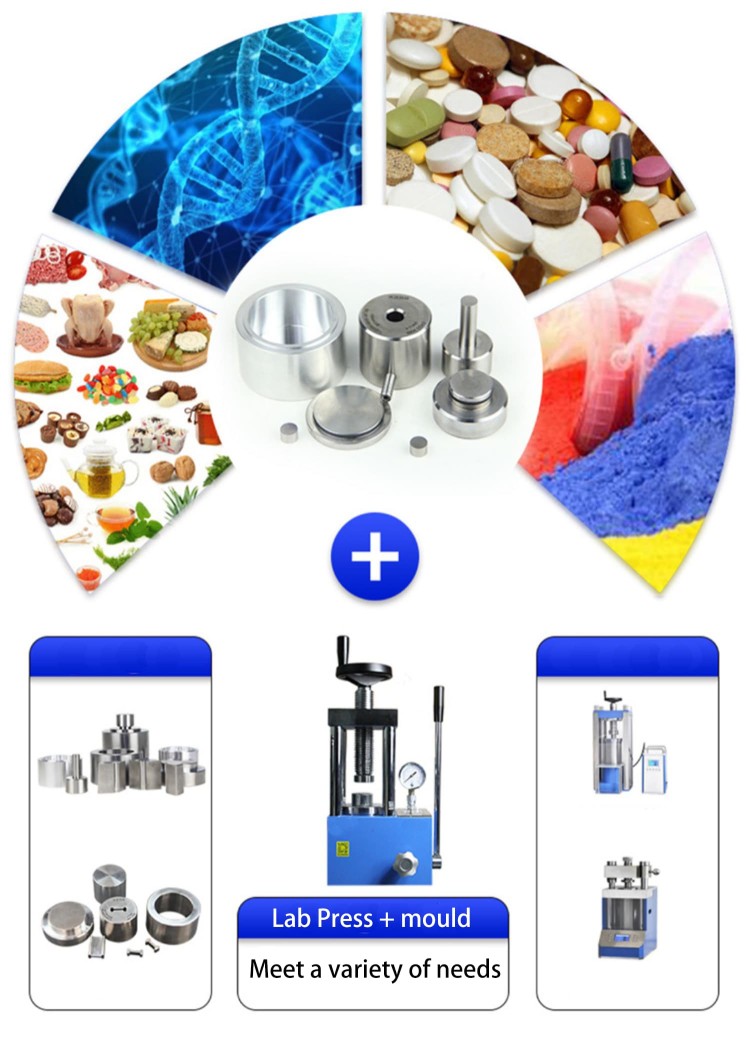
Warnings
Operator safety is the top important issue! Please operate the equipment with cautions. Working with inflammable& explosive or toxic gases is very dangerous, operators must take all necessary precautions before starting the equipment. Working with positive pressure inside the reactors or chambers is dangerous, operator must fellow the safety procedures strictly. Extra caution must also be taken when operating with air-reactive materials, especially under vacuum. A leak can draw air into the apparatus and cause a violent reaction to occur.
Designed for You
KinTek provide deep custom made service and equipment to worldwide customers, our specialized teamwork and rich experienced engineers are capable to undertake the custom tailoring hardware and software equipment requirements, and help our customer to build up the exclusive and personalized equipment and solution!
Would you please drop your ideas to us, our engineers are ready for you now!
FAQ
What Are The Advantages Of Using A Manual Press?
How Does A Manual Press Work?
What Types Of Tasks Can Be Performed Using A Manual Press?
What Is Cold Isostatic Pressing (CIP)?
Cold Isostatic Pressing (CIP) is a process used to compact and mold powders and other materials into a desired shape by applying hydrostatic pressure at room temperature. The process is performed using a flexible mold, typically made of rubber or plastic, that is filled with a liquid pressure medium such as water, oil, or a specialized fluid.
What Are The Applications Of Pellet Presses?
How Does A Pellet Press Work?
What Are The Advantages Of Cold Isostatic Pressing?
- High green strength: Machining of the compacted material in its green state becomes more feasible.
- Materials that are hard to press: Isostatic pressing can be performed on powders without the need for water, lubricants, or binders, making it applicable to a wider range of materials.
- Predictable shrinkage during sintering is achieved due to the high compaction and uniform density.
- Time and cost savings in post-processing are possible due to the ability to create large, complex, and near-net shapes.
- Large aspect ratio parts with uniform density can be produced, resulting in improved quality.
- Green strength enables efficient in-process handling and treatment, reducing production costs.
What Is A Cold Isostatic Press?
A cold isostatic press (CIP) is a machine used to compact and mold powders and other materials into a desired shape.
The process works by filling a flexible mold, usually made of rubber or plastic, with a liquid pressure medium like water, oil, or a specialized fluid. This mold is then placed in a closed container, and equal pressure is applied to each surface to achieve a high-pressure environment.
The pressure results in an increase in the product's density and allows it to take on the desired shape.
Cold isostatic pressing is performed at room temperature, in contrast to hot isostatic pressing which is carried out at higher temperatures.
What Are The Benefits Of Using A Pellet Press?
What Is Manually Operated Lab Press?
Are There Advantages To Manual Isostatic Pressing Over Electric?
Yes!
- Lower cost: Manual isostatic presses are typically less expensive than electric isostatic presses, making them a cost-effective option for small-scale production or prototyping.
- Simpler operation: Manual isostatic presses are typically easier to operate and require less training compared to electric isostatic presses.
- Customizable pressure: The pressure applied by manual isostatic presses can be adjusted manually, which allows for greater control over the pressing process and enables the production of parts with different densities.
Application Field Of Cold Isostatic Press?
Cold Isostatic Pressing is widely used for various applications, including the consolidation of ceramic powders, compression of graphite, refractory materials, and electrical insulators, as well as the production of fine ceramics for dental and medical applications.
This technology is also making inroads into new fields such as pressing sputtering targets, coating valve parts in engines to reduce wear on cylinder heads, telecommunications, electronics, aerospace, and automotive industries.
What Factors Should Be Considered When Selecting A Pellet Press?
What Are The Wearing Parts Of Cold Isostatic Pressing Equipment?
The wearing parts of cold isostatic equipment are mainly various seals, such as various types of seal rings, valve cores and valve seats.
Do You Provide Matching Cold Isostatic Press Molds?
We offer a variety of standard mold shapes for customers to experiment or validate their process. Custom mold design services are also available upon request.
4.9
out of
5
I'm a huge fan of KINTEK SOLUTION's Manual Cold Isostatic Pellet Press (CIP). It has been a great addition to our lab and has helped us to produce high-quality pellets with ease.
4.8
out of
5
As a lab manager, I'm always looking for ways to improve efficiency and accuracy. KINTEK SOLUTION's Manual Cold Isostatic Pellet Press (CIP) has been a game-changer for us. It's easy to use, reliable, and produces consistent results.
4.7
out of
5
The Manual Cold Isostatic Pellet Press (CIP) from KINTEK SOLUTION is an excellent piece of equipment. It's well-made, easy to use, and produces high-quality results. I highly recommend it to any lab that needs a reliable and affordable pellet press.
4.8
out of
5
I've been using KINTEK SOLUTION's Manual Cold Isostatic Pellet Press (CIP) for several years now and I'm very impressed with its performance. It's a durable and reliable machine that produces high-quality pellets. I would definitely recommend it to other labs.
4.9
out of
5
The Manual Cold Isostatic Pellet Press (CIP) from KINTEK SOLUTION is a great choice for labs that need a compact and affordable pellet press. It's easy to use and produces consistent results. I'm very happy with my purchase.
4.7
out of
5
I've been using KINTEK SOLUTION's Manual Cold Isostatic Pellet Press (CIP) for a few months now and I'm very impressed with its capabilities. It's a versatile machine that can be used for a variety of applications. I would definitely recommend it to other labs.
4.8
out of
5
The Manual Cold Isostatic Pellet Press (CIP) from KINTEK SOLUTION is a great investment for any lab. It's a well-made machine that produces high-quality results. I'm very happy with my purchase.
4.9
out of
5
I'm very satisfied with KINTEK SOLUTION's Manual Cold Isostatic Pellet Press (CIP). It's a reliable and easy-to-use machine that produces consistent results. I highly recommend it to any lab that needs a pellet press.
REQUEST A QUOTE
Our professional team will reply to you within one business day. Please feel free to contact us!
Related Products
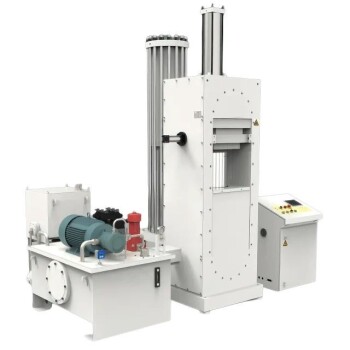
Cold Isostatic Pressing Machine CIP for Small Workpiece Production 400Mpa
Produce uniformly high-density materials with our Cold Isostatic Press. Ideal for compacting small workpieces in production settings. Widely used in powder metallurgy, ceramics, and biopharmaceutical fields for high-pressure sterilization and protein activation.
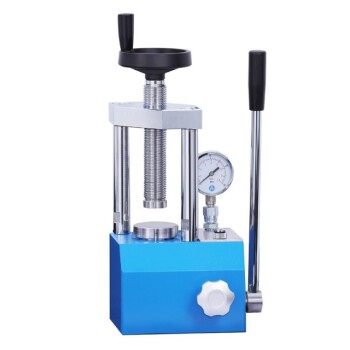
Laboratory Manual Hydraulic Pellet Press for Lab Use
Efficient Manure Lab Hydraulic Press with Safety Cover for sample preparation in material research, pharmacy, and electronic industries. Available in 15T to 60T.
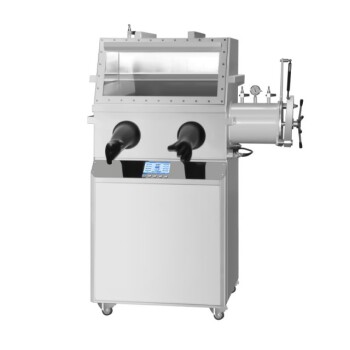
Laboratory Hydraulic Press Lab Pellet Press Machine for Glove Box
Controlled environment lab press machine for glove box. Specialized equipment for material pressing and shaping with high precision digital pressure gauge.

Introducing the KINTEK KBR Press - a handheld laboratory hydraulic press designed for entry-level users.

30T 40T Split Automatic Heated Hydraulic Press Machine with Heated Plates for Laboratory Hot Press
Discover our split automatic heated lab press 30T/40T for precise sample preparation in material research, pharmacy, ceramics, and electronics industries. With a small footprint and heating up to 300°C, it's perfect for processing under vacuum environment.
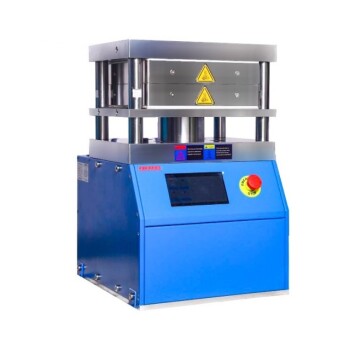
Automatic Heated Hydraulic Press Machine with Heated Plates for Laboratory Hot Press 25T 30T 50T
Efficiently prepare your samples with our Automatic Heated Lab Press. With a pressure range up to 50T and precise control, it's perfect for various industries.
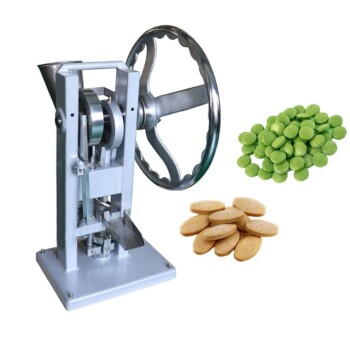
Single Punch Manual Tablet Press Machine TDP Tablet Punching Machine
Single punch manual tablet punching machine can press various granular, crystal or powdery raw materials with good fluidity into disc-shaped, cylindrical, spherical, convex, concave and other various geometric shapes (such as square, triangle, ellipse, capsule shape, etc.), and can also press products with text and patterns.
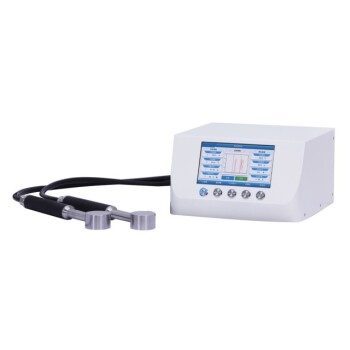
Infrared Heating Quantitative Flat Plate Press Mold
Discover advanced infrared heating solutions with high-density insulation and precise PID control for uniform thermal performance in various applications.
Related Articles

Electric Lab Cold Isostatic Press (CIP): Applications, Benefits, and Customization
Explore the versatile world of Electric Lab Cold Isostatic Press (CIP) technology. Learn about its applications in various industries, benefits, and customization options for tailored solutions.

The Benefits of Using Isostatic Pressing in Manufacturing
sostatic pressing is a manufacturing process that involves applying uniform pressure to a material to achieve a specific shape or density. The process can be performed at room temperature (cold isostatic pressing or CIP) or at high temperatures (hot isostatic pressing or HIP).

Understanding the Basics of Isostatic Pressing
Isostatic pressing is a manufacturing process used to shape and consolidate materials by applying equal pressure from all directions. The technique involves placing a material in a pressure vessel and applying hydrostatic pressure to the material.

Isostatic Pressing Technology in Solid-State Battery Production
Exploring the role of isostatic pressing technology in manufacturing solid electrolytes for next-generation solid-state batteries.

Comprehensive Guide to Isostatic Pressing Molds: Types, Processes, and Applications
Explore the detailed world of isostatic pressing molds, including types like wet bag and dry bag, their processes, and applications. Learn how these molds ensure uniform density and high-strength products.

Isostatic Pressing Technology: Revolutionizing Ceramic Material Densification
Explore how isostatic pressing techniques enhance ceramic properties, achieving 100% theoretical density and eliminating porosity.

How Isostatic Presses Improve the Efficiency of Material Processing
Isostatic pressing is a manufacturing process that uses high pressure to compact and shape materials. It can be done at room temperature (cold isostatic pressing) or at high temperatures (hot isostatic pressing).

Understanding Cold Isostatic Pressing and Its Applications
Cold isostatic pressing (CIP) is a method of processing materials. It involves compacting powders by enclosing them in an elastomer mold and applying uniform liquid pressure to compress the mold. This results in a highly compact solid. Cold isostatic pressing is commonly used for plastics, graphite, powdered metallurgy, ceramics, sputtering targets, and other materials.

Cold Isostatic Pressing (CIP): A Proven Process for High-Performance Parts Manufacturing
Cold isostatic pressing (CIP) is a proven process that stands out when it comes to high-performance part manufacturing. The technology offers a range of advantages, from achieving superior densities in ceramics to compressing materials as diverse as metals and graphite.

Automatic isostatic press operation steps
Introduction to the operating steps of automatic isostatic press.

Beyond the Die: The Unseen Advantage of Cold Isostatic Pressing
Discover how Cold Isostatic Pressing creates components with uniform density, overcoming the geometric and cost limitations of traditional methods.

Hot & Cold Isostatic Pressing: Applications, Process, and Specifications
Hot Isostatic Pressing (HIP) is a manufacturing process that involves the simultaneous application of high temperature and pressure to metals and other materials. The purpose of HIP is to reduce the porosity of metals and increase the density of ceramic materials. This process improves the mechanical properties and workability of the materials.